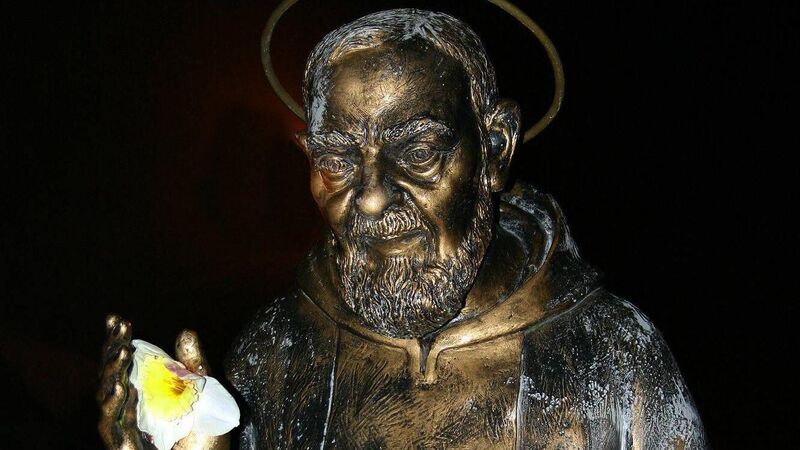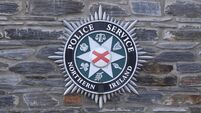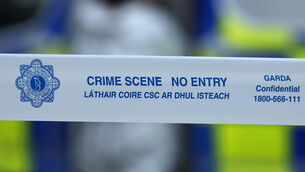Why was Padre Pio back in the news this week?

A statue of Padre Pio in Holycross, Tipperary. Picture: Flickr
He may have died more than five decades ago, but Padre Pio — otherwise known as Saint Pius of Pietrelcina — was back in the headlines over the last few days.
Last week, the reported that two women claimed to have seen an apparition of the saint at a church in Limerick. The women, whose prayer group had been marking the 54th anniversary of the saint's death, claimed to see his image inside St Saviour's Church on Dominic Street in Limerick City.
According to the women, a photograph, taken in the church in 2018 and currently displayed on the church's wall, lit up, changed colour, and then morphed into an image of the saint.
"The floor [in the photo] became very clear, and Padre Pio appeared like a breeze, right down to the front of the picture, I could see his brown Capuchin habit, I could see that as clear as could be, and he was standing on his side,” one of the women said.

“It was so real, it’s very hard to explain it to people, it was remarkable."
On Monday, a caller to RTÉ's told Joe Duffy she had seen an image of Padre Pio's face on the wooden bannister of her stairs.
She made her claim in a discussion on about apparitions of saints — including Padre Pio — which people claimed to have seen.
Listeners are sharing their stories and devotion to St. Padre Pio with @joeliveline, Kay spotted this image of Padre Pio on the bannister of her stairs:#liveline pic.twitter.com/KM5J9w0pI8
— Liveline (@rteliveline) October 3, 2022
One of the women who was involved in the story about Padre Pio in the photo in Limerick also spoke on the show.
Well, yes.
Padre Pio is among the most venerated and recognisable of all Catholic saints.
In the decades since his death in 1968, people across the world claim his image has appeared to them.
And, Padre Pio aside, Ireland has heard numerous stories of religious apparitions before.
Most people will be familiar with the apparition which took place in Knock, Co Mayo, in 1879, but there have been others.
During the months of August and September 1920, several Marian apparitions — apparitions involving the Virgin Mary — reportedly took place in Templemore, Co Tipperary.

In 1985, several people across Ireland claimed to see statues of the Virgin Mary move spontaneously. The most notable and earliest incident took place in Ballinspittle, Co Cork, in July, 1985. Others were reported in Waterford and Wexford thereafter. In fact, researchers at University College Cork recorded 31 such reports from across Ireland during 1985.
Another notable apparition occurred in 2009 in Rathkeale, Co Limerick, when two workmen who had cut down a tree claimed to see Mary's image in the tree stump.
In 2016, a house in Kilmallock, Co Limerick, hit the headlines after a supposed image of Mary appeared on its facade.
There are many other sites of supposed religious apparitions around Ireland.
Padre Pio was born Francesco Forgione in Pietrelcina in the Campania region of Italy on May 25, 1887.
By the age of five, he was already said to have dedicated his life to God.
At age 15, he was admitted to the novitiate of the Capuchin Order of the Friars Minor in Morcone, Italy, where his devotion and spirituality quickly gained him the admiration of his superiors and fellow students.
He was ordained a priest in 1910, at the age of 23.
From about that time on, Padre Pio began to exhibit signs of stigmata: that is, marks, cuts, pain and bleeding at locations on his body which supposedly corresponded to the wounds suffered by Jesus Christ during his crucifixion. Another famous Italian saint, Francis of Assisi, supposedly bore similar wounds. For the rest of his life, he was often seen wearing gloves or mittens to hide the marks.
Once information about this was made public, Padre Pio's profile grew significantly.
At different periods in his life, Padre Pio is said to have performed several miracles, including restoring a young girl's sight, restoring an elderly man's ability to walk, and healing dozens of ill people.

His connection with Ireland goes back to the 1930s, when several Irish priests travelled to Italy to meet with him. In the '40s, '50s and '60s, many more Irish priests and laypeople followed suit, and it is likely they told their communities of their own experiences of seeing the then-friar.
Padre Pio was beatified in 1999 and canonised by Pope John Paul II in 2002, adding to his popularity and legacy. Numerous churches and religious building, including here in Ireland, are named after him.
After his death, dozens of apparitions of him were reported around the world, particularly in Europe.
His exhumed body was displayed in a glass coffin at the San Giovanni Rotondo in the Apulia region of southern Italy in 2008. Hundreds of thousands of worshippers visited the site in 2008 and 2009.
His life story, coupled with the relative recency of his death and canonisation, have seen these stories continue to this day.









